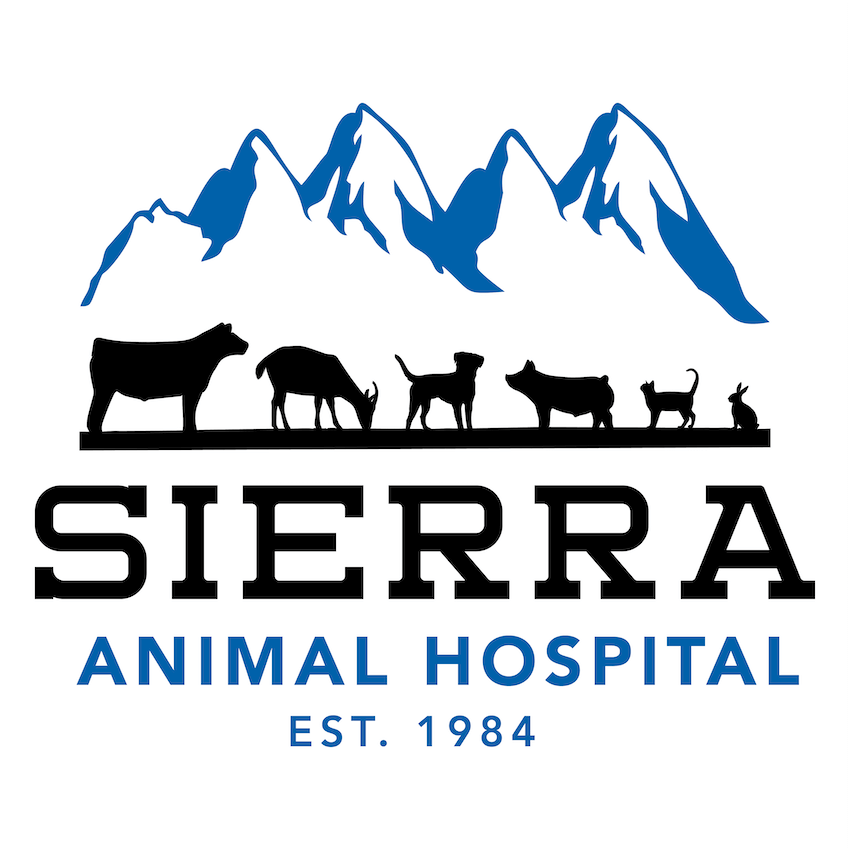Rope Halters (Figure 1)
Hold slip lead and top of nose piece in left hand, and head stall in right hand.
Approach animal, typically from the left side, being respectful of the animal’s flight zone.
Slip nose piece over nose with slip lead under chin, and place head stall over the top of the head and behind ears.
OR
Place head stall over poll and behind ears, then place nose piece around nose, with slip lead under chin (Figure 2).
Pull the rope to adjust slip lead to proper size – for length of head and around nose (Figure 3).
Lead can be tied using a quick-release knot to a secure location, such as a ring or post, or to the stanchion if being used, with minimal slack (Figure 4).
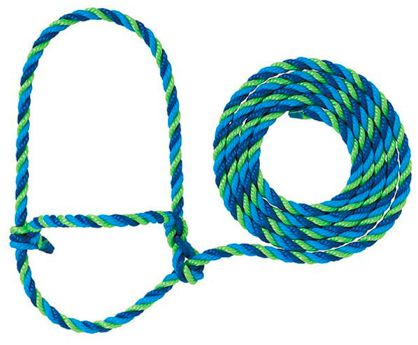
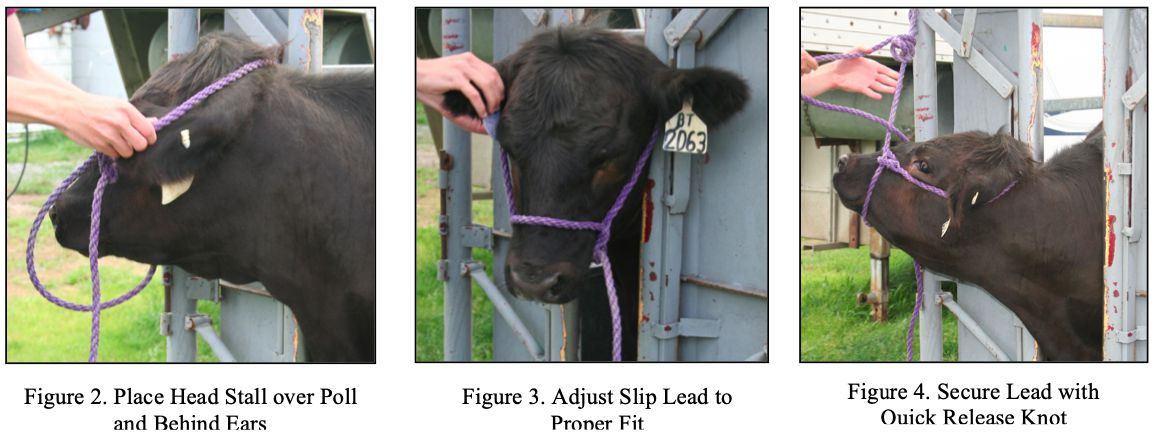
Mechanical Restraint
i. Cattle can be effectively and safely restrained in squeeze chutes, consisting of a headgate, tailgate, and sides that can be moved to change the width of the chute. The working chute leading up to the squeeze chute may include back-up or tailgate bars so that each animal can be enclosed as they pass through, so as to not move forward or backwards once secured (Figures 5 and 6).
ii. Handler should inspect all working parts and ensure that there are no obstacles or sharp objects that might injure animals prior to using chute or stanchions.
iii. As animal moves head through headgate, one handler closes head gate while a second handler places tailgate bar or rear gate depending upon style. Ensure that all latches, catches, or locks are secure. If squeeze chute, handler may be able to slowly squeeze animal to slow its progress to the headgate, to prevent injury from hitting headgate too fast.
iv. Once chute is secured, a rope halter can be used to restrain head as needed.

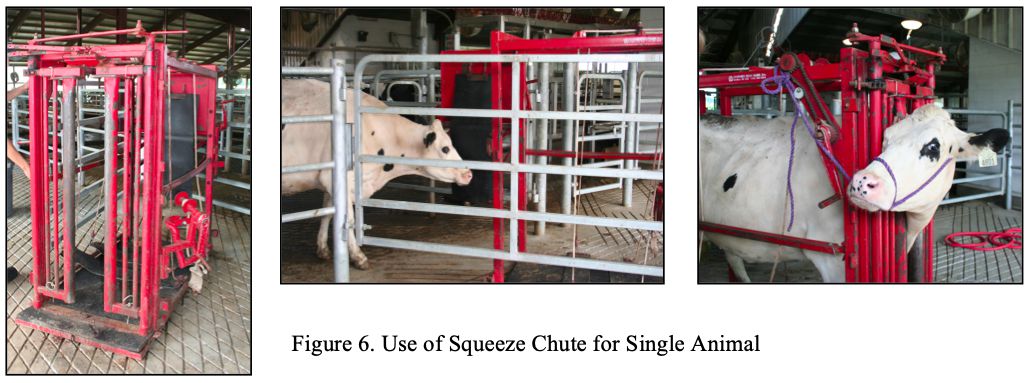
i. Applying even pressure with the squeeze allows the animal to remain upright and balanced; optimal pressure induces a calming effect.
Standard Head Gate, to be attached to stable post or pillar
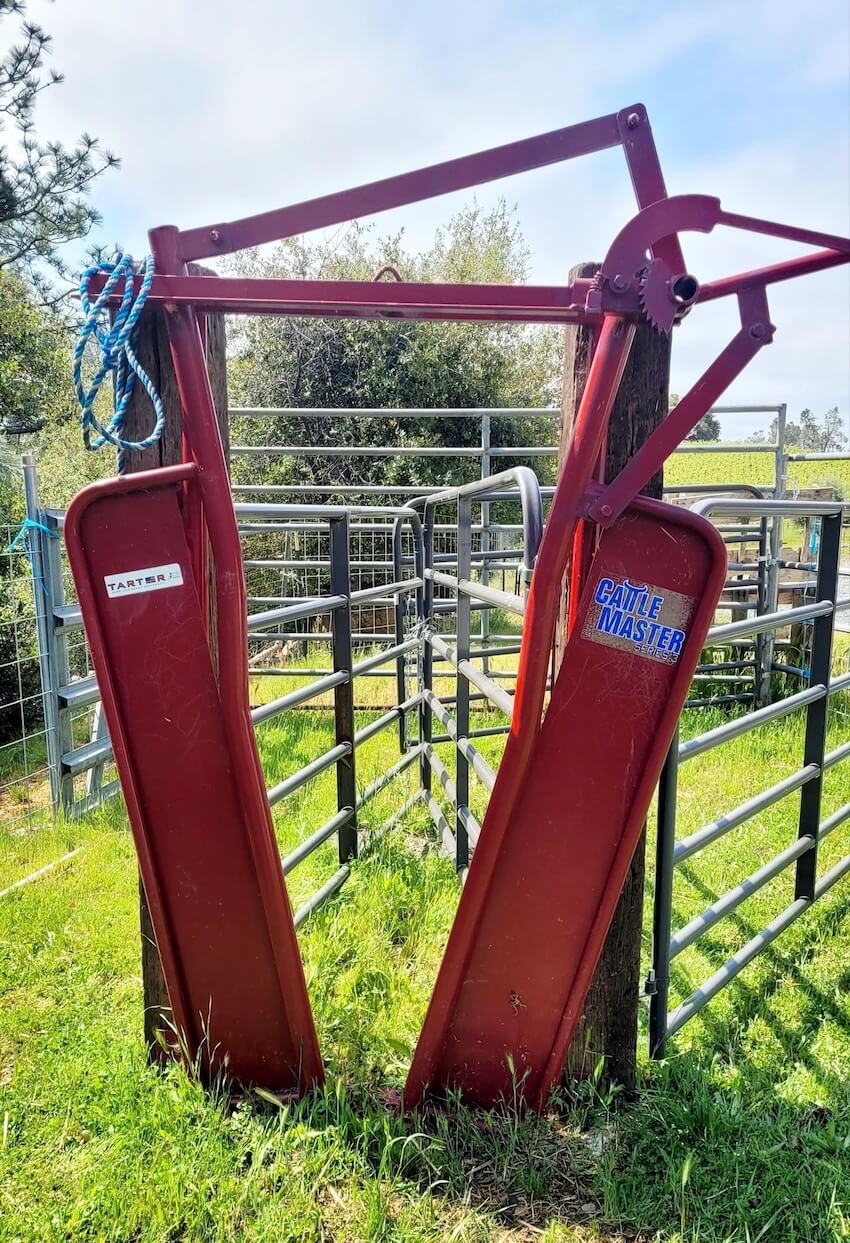
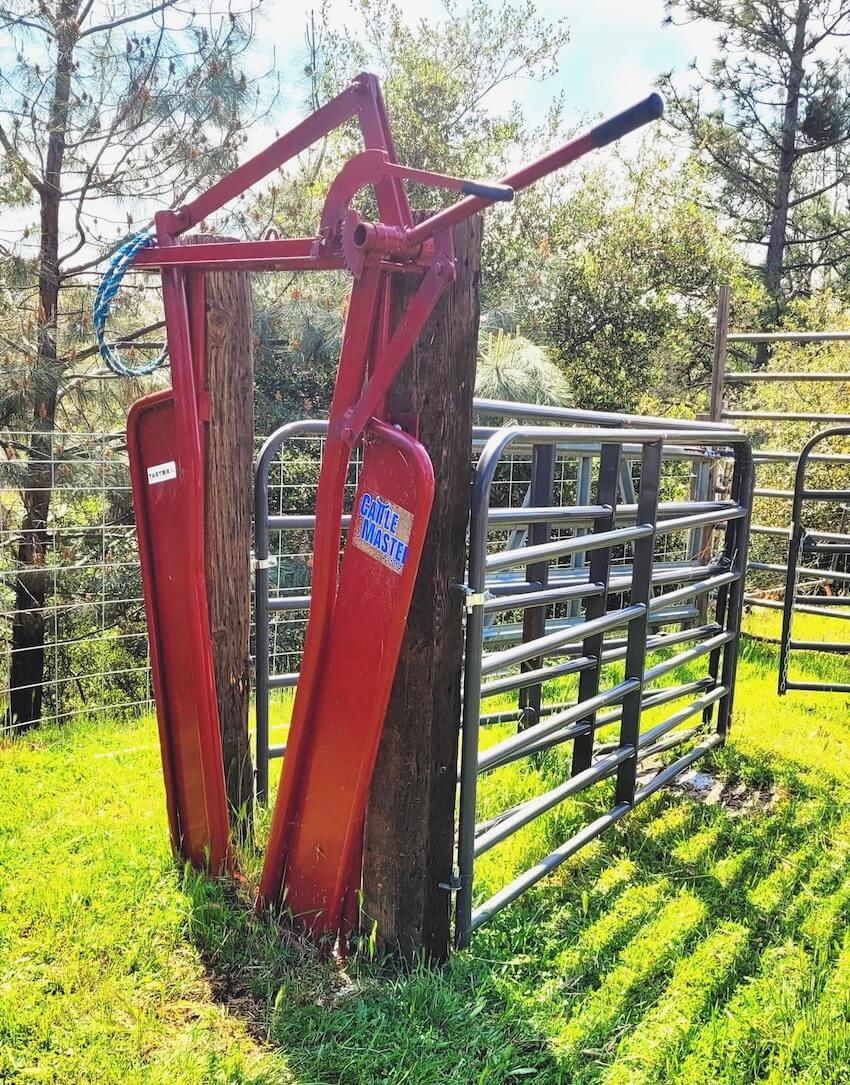
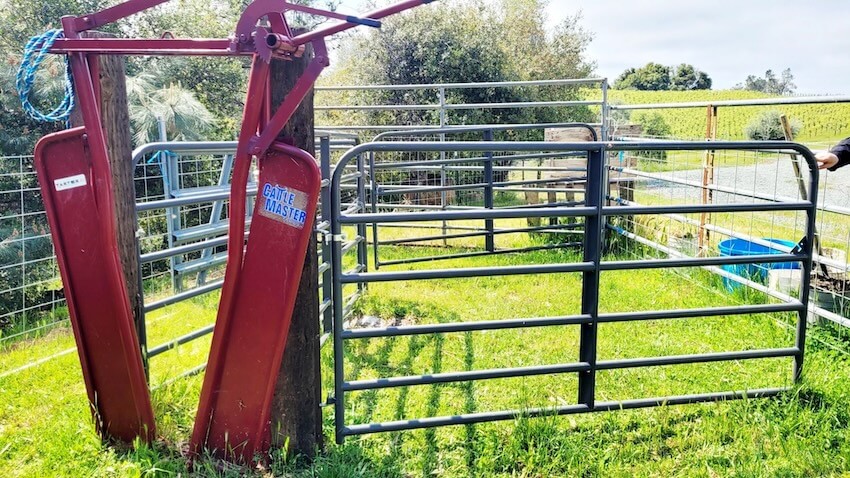
Fence panels attached to stable post, able to swing and guide animal into position
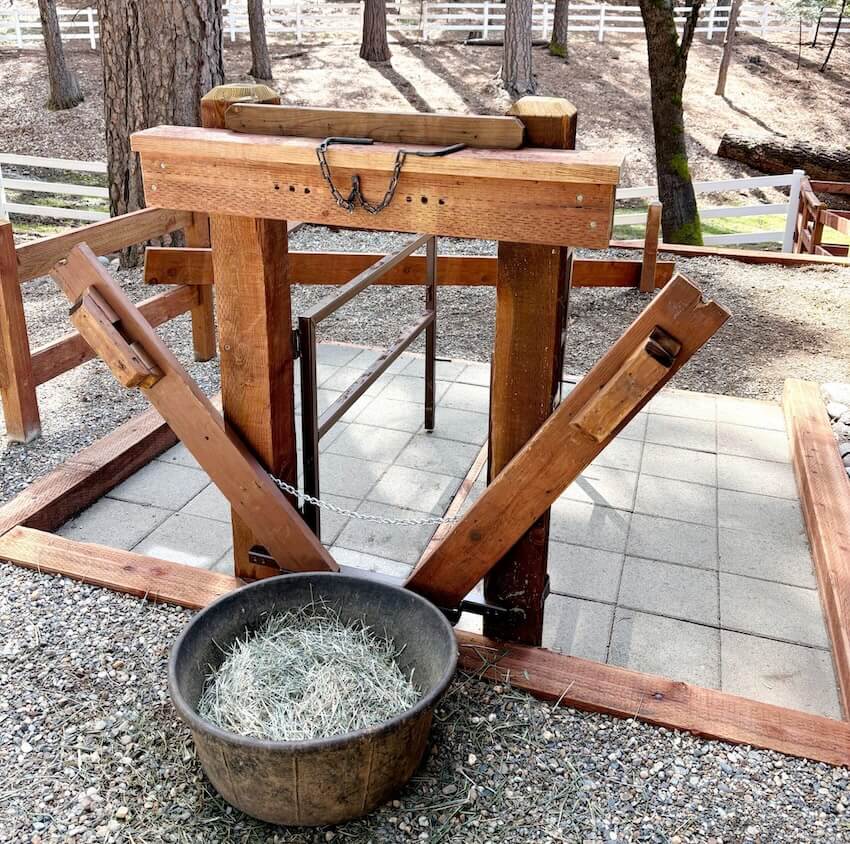
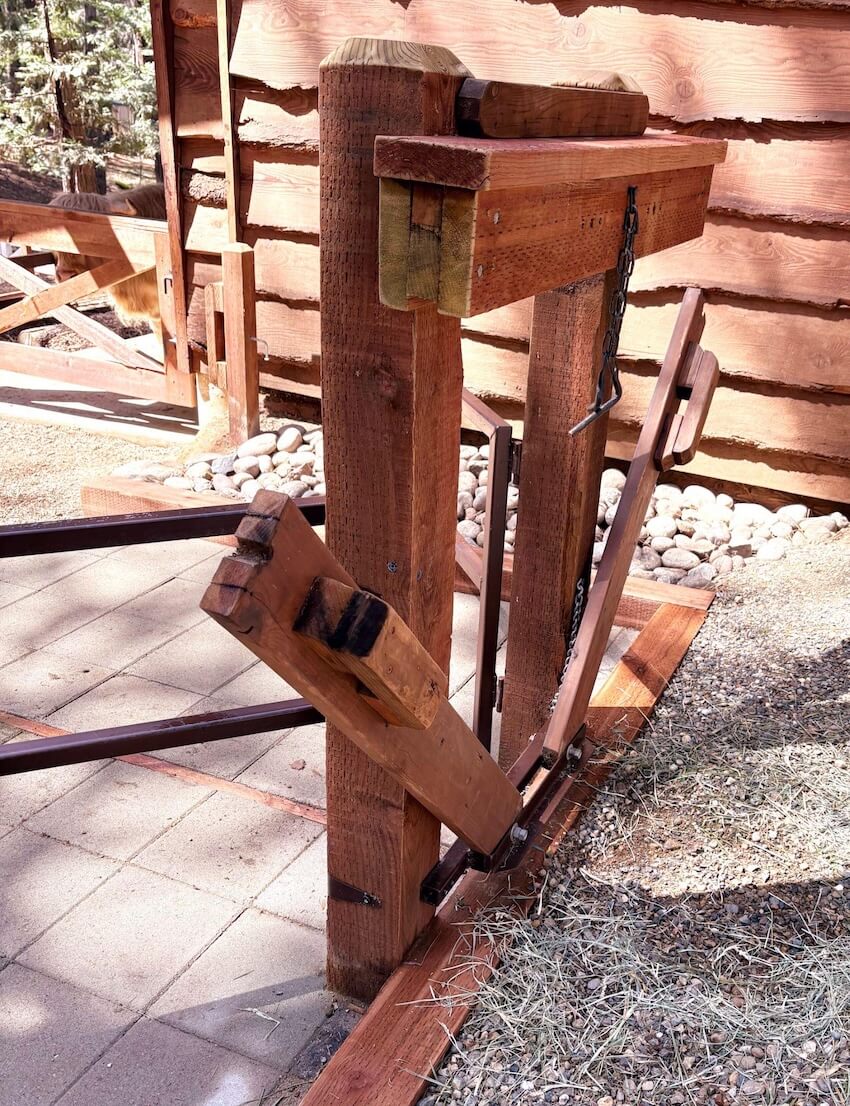
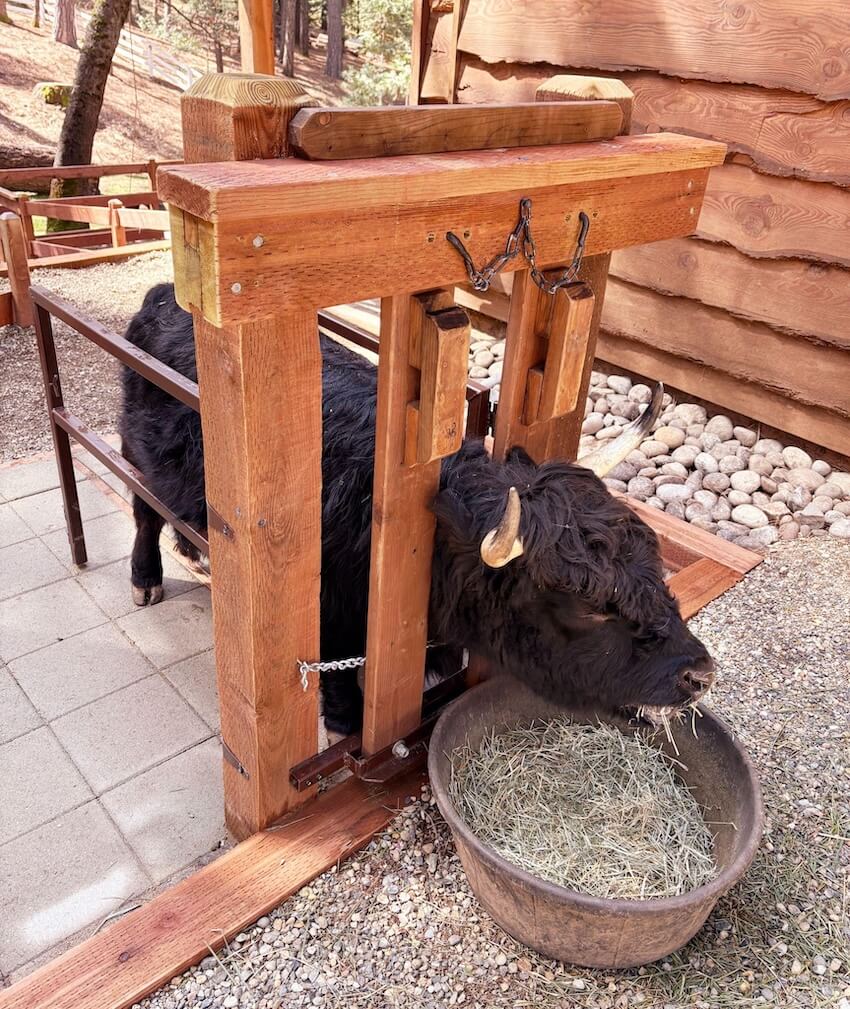
Original Source: SOP: Bovine Restraint - Virginia Tech
